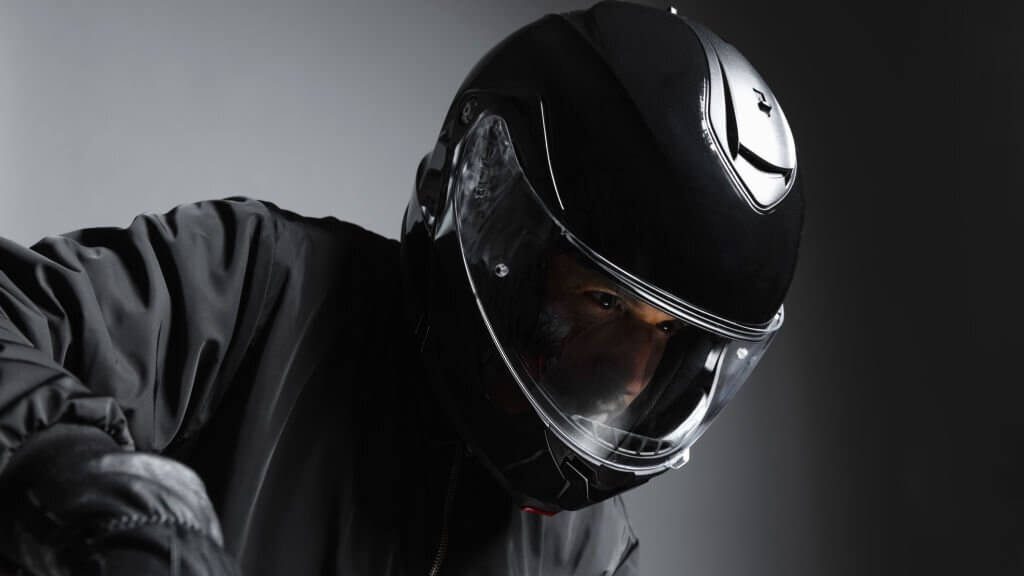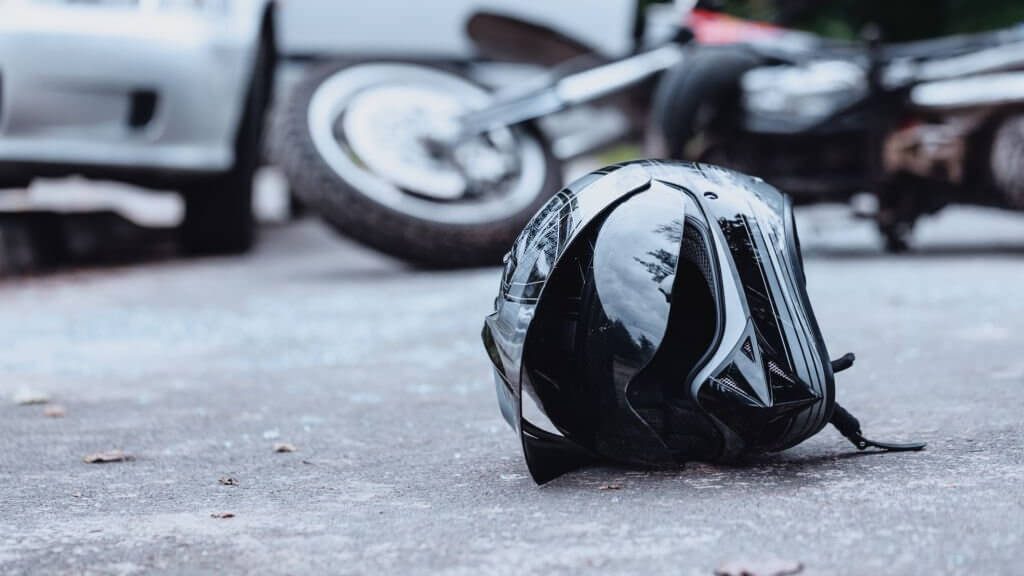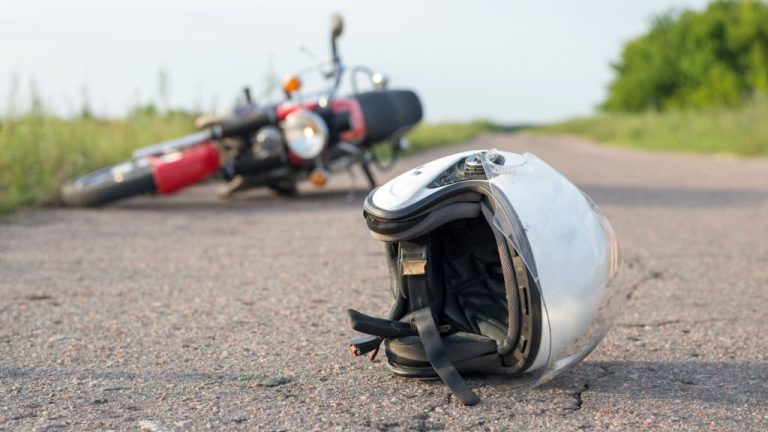Are you a fan of riding a motorbike and taking to the open road? If so, you are aware of how important safety is.
One of the most important pieces of safety equipment you can purchase as a rider is a helmet. Have you ever thought about how long motorcycle helmets are good for, though? Motorcycle helmets have a shelf life. The solution might surprise you.
Contrary to popular assumption, a motorcycle helmet’s expiration date is not fixed. The date to replace the helmet is not indicated on any sticker inside.
Instead, usage, storage conditions, and exposure to UV radiation are a few of the elements that affect a helmet’s longevity.
In order to ensure your safety, this guide will explain the nuances of motorcycle helmet expiration and how to determine when to replace your helmet.
Expiry Date on Helmets
You might be wondering if your helmet has a shelf life as a motorbike rider. Most likely, you have looked for a sticker or label suggesting when to replace your helmet but haven’t come across one.
The helmet has no expiry date marking, therefore its long-term durability is unknown.
Each motorcycle helmet has a lifespan, which is also referred to as the motorcycle helmet lifespan. A variety of factors influence its longevity, including usage, storage conditions, and UV exposure.
It is important to note that any helmet that has been in an accident or has been dropped must be replaced promptly, regardless of its age.
How Long Before Motorcycle Helmets Expire?
Motorcycle helmets must offer sufficient protection if they are to be used. Motorcycle helmets should be replaced every five years, in response to a commonly asked question from riders.
Aspects like consumption, storage conditions, and UV exposure must also be taken into account.
Using motorcycle helmet wraps is one way to make your helmet last longer. These protective coatings give your helmet style while shielding it from dings and UV deterioration, increasing its longevity.
What Causes Helmet Degradation?
Did you know your helmet can expire over time, risking your safety? The degradation of a motorcycle helmet can occur for several reasons, and it’s essential to understand the causes to ensure you’re always riding with the best possible protection.
Chin Straps
The chin strap on your helmet is essential to its overall structural integrity. Over time, the strap can stretch or weaken, compromising the fit and security of your helmet.

This stretching can occur due to the helmet’s weight or natural wear and tear. As a result, you may need to replace your helmet’s chin strap to ensure your helmet stays securely in place.
Comfort Liner/Padding
The comfort liner or padding inside your helmet is critical in keeping you comfortable and safe. This padding can degrade, mainly if you frequently sweat while riding. As the padding breaks down, it can create uncomfortable pressure points and compromise your helmet’s fit.
EPS Liner
Your helmet’s Expanded Polystyrene (EPS) liner is designed to absorb impact and protect your head.
However, exposure to heat and sunlight can cause the EPS to degrade, reducing its ability to protect you in the event of an accident. If you drop your helmet, the EPS liner can suffer damage that reduces effectiveness.
Outer Layer
The outer layer of your helmet protects the EPS liner and contributes to the overall structural integrity of your helmet.
Over time, exposure to UV rays, weather, and general wear and tear can cause the outer layer to deteriorate. This deterioration can weaken the helmet’s protection and lead to motorcycle helmet expiration.
Glue
The glue that holds the various components of your helmet together can weaken over time, leading to separation and reduced protection.
High temperatures, exposure to chemicals, and moisture can all impact the effectiveness of the glue used in your helmet’s construction.
Date of Manufacture vs Date of Purchase
Understanding the difference between the date of manufacturing and the date of purchase is crucial when buying a motorcycle helmet.
Helmets do not have an helmet expiration date sticker, but they do have a date of manufacture stamp, which is often found on the safety certificate label and Styrofoam liner.

It’s important to confirm the date of manufacturing because helmets can deteriorate even while stored in a box on a shelf.
Over time, glue may become less effective, reducing the safety of the helmet. Additionally, it’s important to note that motorcycle helmet brands to avoid may have a shorter lifespan than others.
In general, if a helmet is well-maintained and used under typical circumstances, it should be good for the next five years if it was manufactured two years before it was purchased.
However, it is advised to wear the helmet for just a year or two before changing it if it is already five years old at the time of purchase.
Many shops may start to mark down their inventory as the production dates reach a little bit too old, so check with them if you need further information regarding the age of a helmet.
A motorcycle helmet should always be chosen and worn with safety as the top concern.
Motorcycle Helmet Care and Maintenance
Proper care and maintenance are essential to extend the motorcycle helmet’s shelf life and ensure optimal performance.
Here are some pointers for maintaining your helmet:
- Wash your helmet with mild soap and water on a regular basis to remove dirt and debris.
- Abrasive substances, such as chemicals, solvents, or petroleum-based goods, should be avoided since they can damage the padding and shell of the helmet.
- Keep your helmet away from the sun, extreme hot or cold temperatures, and humidity.
- If the helmet has been in an accident, fallen from a great height, or shows signs of wear and tear such as cracks, dents, or loose padding, it should be replaced.
- To ensure the highest degree of safety and comfort, follow the manufacturer’s care and maintenance recommendations.
Where Do You Find the Date of Manufacture?
As a responsible rider, keeping track of your motorcycle helmet life to ensure your safety on the road is essential. But where do you find the date of manufacture on helmets?

The good news is that most helmets come with a tag displaying the manufacture date. This tag can be found on one of the chin straps or under the padding near your ears.
Once you’ve located the tag, refer to the expiration duration guidelines to determine if your helmet is safe. Remember, it’s crucial to prioritize your safety by using a properly functioning helmet.
Do Motorcycle Helmets Expire If Not Used?
If you’re a rider who uses their motorcycle helmet sparingly, you may wonder if it can still expire. The short answer is yes, and helmets deteriorate over time due to many factors.
It can still expire even if you haven’t used your helmet in a while. Exposure to UV rays, humidity, and temperature changes can all impact the integrity of your helmet.
Additionally, helmets can be affected by the environment they are stored in, leading to the deterioration of the internal foam and lining.
To ensure your helmet is in top condition, consider using anti-fog for motorcycle helmets and check when motorcycle helmets expire.
Is It Okay To Buy A Used Or Expired Helmet?
The quick response is no.
It is never a good idea to purchase a secondhand motorbike helmet.
You can never be sure if a helmet has been in an accident or has concealed flaws that might endanger your safety, even if it appears to be in fine shape.
In the case of an accident, a worn helmet may no longer adequately protect your head since it has reached the end of its useful life.
Do Kevlar Helmets Expire?
The answer is yes, with qualifications.
Kevlar helmets, like all motorcycle helmets, have a lifespan. The manufacturer specifications typically indicate a lifespan of about 5-10 years for helmets in constant proper usage.

However, this lifespan can be affected by factors such as exposure to UV rays and environmental conditions.
And regardless of the type of helmet you choose, always make sure it fits appropriately by considering how tight a motorcycle helmet is for optimal safety on the road.
Do Dot Motorcycle Helmets Expire?
While helmets don’t necessarily have an expiration date, they do have a limited lifespan.
Another factor to consider is the motorcycle helmet break-in period. It’s crucial to properly break in your helmet to ensure maximum comfort and protection.
Shoei Motorcycle Helmet Lifespan
The answer may depend on its manufacture date. Most helmet manufacturers recommend replacing helmets every 3 years, regardless of their condition.
This is because the materials used to construct the helmet can deteriorate over time, even if the helmet has not been involved in any accidents.
Bell Helmet Expiration Date
Bell is a trusted motorcycle helmet industry brand known for its innovative designs and exceptional performance. But how long will it be before you need to buy a new Bell helmet?

Bell suggests changing your helmet every three (3) years as a general rule of thumb. This is because helmets wear out over time and because helmet technology has improved.
HJC Helmet Expiration Date
If you own an HJC helmet, you may wonder about its expiration date. HJC is a well-known and respected motorcycle industry brand known for its high-quality and reliable helmets.
According to the manufacturer, HJC recommends changing a helmet every 3 to 5 years.
Do Motorcycle Helmets Expire FAQs
It’s recommended to replace your motorcycle helmet every five years or sooner if it has been involved in an accident or has visible signs of wear and tear.
Yes, motorcycle helmets can deteriorate over time due to exposure to sunlight, sweat, and other environmental factors, so replacing them periodically is essential.
If your motorcycle helmet is still in good condition, you can donate it to emergency services or a friend in need. If it’s damaged, it should be disposed of and not reused.
Motorcycle helmets are made of various materials, including polycarbonate, fiberglass, carbon fiber, and Kevlar. The outer shell provides impact resistance, while the inner liner cushions the head and absorbs shock.
A new motorcycle helmet can range from around $150 to over $800, depending on the brand, materials, and features.
Motorcycle helmets have no set maximum shelf life, but they should be replaced after five years or sooner if they have been involved in an accident or have visible signs of wear and tear.
Wrapping Up!
Motorcycle helmets expire, and riders need to be aware of this to ensure their safety on the road. The typical lifespan of a helmet ranges from 3 to 5 years, but it can be affected by various factors such as usage, storage conditions, and impact damage.
As a rule of thumb, riders should always inspect their helmet for signs of wear and tear and replace them if it’s no longer safe.
We hope this article has provided the information you need to understand the importance of helmet expiration dates and how to maintain your motorcycle helmet properly.
If you have any questions or concerns about helmet safety, don’t hesitate to contact a qualified professional.
Have you ever had to replace a motorcycle helmet due to it reaching its expiration date, and how did you know it was time for a new one?


Comments are closed.